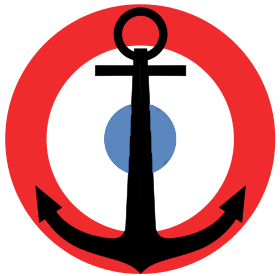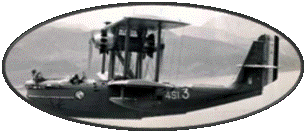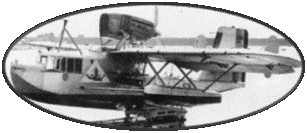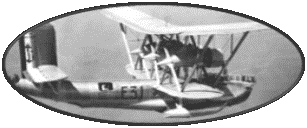In 1936, the German Navy
launched a competition for the supply of a catapultable seaplane
intended to replace the old Heinkel He60 biplanes on board German
line ships. The firm Arado is in competition with Focke-Wulf. The
latter chooses to keep the somewhat outdated biplane formula, while
Arado offers a aircraft with modern lines. It is the latter which
is retained by the official services. The new aircraft is put into
service one month before the start of the conflict.
The Arado Ar196 presents
itself as a low-wing monoplane seaplane. Built around a metal structure
covered with canvas or Aluminum, it is equipped with two large floats
which housed the fuel tanks and safety equipment. The armament consists
of a MG 17 7.92 mm defensive machine gun mounted at the rear post
and another MG17 installed in the chase in the front part of the
fuselage. It can carry 2 bombs of 50 kg under the wings. The first
4 prototypes, equipped with a BMW 132Dc radial engine of 880 hp,
will be tested in 1938. Mass production is launched in Warnemünde,
near the Baltic Sea, and the first production version, the Arado
Ar196 A-1 entered service in July 1939. It was fitted with a more
powerful BMW 132K engine
The first specimens will
be embarked on board the pocket battleships Deutschland and Graf
von Spee just before these ships set sail for their future bases
of War. 18 other Arado Ar196s will equip the heavy cruisers Scharnhorst
and Gneisenau, and the pocket battleship Admiral Scheer. In total,
35 Arado Ar 196 will be produced in 1939.
These aircraft enabled the
Cruisers Scharnorst, Gneisenau and Deutschland to locate and destroy
numerous Allied merchant ships. By cons, when fighting against other
war ship, the use of these seaplanes is tricky: it is indeed very
difficult to reassemble the aircraft on board with a crane under
enemy fire. The Bismark used them during its last combat, to try
to move away the Catalina Allies charged to locate the ship.
The Arado Ar 196 was also used, as early as 1940, in coastal units
for coastal surveillance. The Arado Ar196 A-3 appeared in 1941 spring
sees its' armament seriously reinforced: it now receives a 20mm
MG FF cannon in each wing,
These aircraft, used in particular
from bases on the occupied Atlantic coast, will protect submarine
bases for a time, but will also carry out maritime surveillance,
convoy protection or submarine attack missions from bases in the
Mediterranean.
The other operational version
identified is the Arado Ar196 A-5 which differed from the A-3 only
in its internal equipment. This version was notably manufactured
by the Dutch firm, Fokker, during the period 1943-1944 (70 aircraft).
About 20 other copies will also be built in Saint-Nazaire, France,
in the workshops of the SNCAO (Société Nationale de
Constructions Aéronautiques de l'Ouest)
The Arado company manufactured
around 400 aircraft, mainly in the A-3 version









